 Ten years ago, Ariel Sharon marched on the symbolic heart of the Israeli-Palestinian conflict, flanked by a 1,000-strong security force, and invoked one of the most famous phrases in Israeli history.
Ten years ago, Ariel Sharon marched on the symbolic heart of the Israeli-Palestinian conflict, flanked by a 1,000-strong security force, and invoked one of the most famous phrases in Israeli history.
Though Sharon’s message that day was directed to the Israeli public in his run for the leadership of the Likud party, it was received with rage by Palestinians, whose anger after the failure of the Oslo peace process and the collapse of final status negotiations at Camp David two months earlier was simmering.
General Sharon’s legacy had long been cemented in the Palestinian narrative: Architect of the invasion of Lebanon; responsible for the vicious massacres at Sabra and Shatila; and, in many ways, founder of the settlement enterprise that by the autumn of 2000 had devastated Palestinian aspirations for statehood.
A perfect storm
What began as a few hundred protesters throwing shoes at Sharon’s police escort following prayers at al-Aqsa mosque had within hours erupted into demonstrations across the Palestinian territories, with chants of “we want an intifada”.
The following day, September 29, Israeli forces opened fire on crowds of unarmed demonstrators in al-Aqsa compound, killing seven and wounding more than 100. “People are being massacred! Bring the ambulances,” echoed from the mosque’s loudspeakers.
Demonstrations raged throughout the West Bank and Gaza. Israeli forces repeatedly met the stone-throwing crowds with live ammunition.
In Gaza, a French broadcast crew captured footage of a boy called Mohammed al-Durrah being shot repeatedly by Israeli forces as he clung to his father. Moments later, a paramedic from the Palestinian Red Crescent Society was killed as he attempted to treat the boy and his father.
Inside the Green Line, too, riots took hold in Palestinian communities, with 13 Palestinian citizens of Israel killed in the first days of protests.
As the intensity of the demonstrations increased, so too did international and human rights groups’ condemnation of Israel’s violent attempts to suppress what was quickly becoming an uprising.
Amos Malka, the head of Israeli military intelligence at the time, said that Israeli forces fired more than 1,300,000 bullets in the territories in the first month alone.
“This is a strategic figure that says that our soldiers are shooting and shooting and shooting,” Malka said about what amounted to some 40,000 rounds a day.
“The significance is that we are determining the height of the flames.”
War
By the end of the year, at least 275 Palestinians had been killed and thousands had been wounded, along with 19 members of the Israeli security forces and five Israeli civilians, according to the Israeli human rights group B’Tselem.
Palestinian stone-throwers were met with Israeli snipers; gunmen, with helicopter gunships and tanks. What began as a popular protest movement quickly began to look like a war.
“When the soldiers began to fire on the crowds, people knew that their role was finished and participation quickly declined. It was a war,” said Kamel Jaber, a member of the political wing of the Popular Front for the Liberation of Palestine (PFLP) in an interview in 2003.
Whereas the first intifada (1987-1992) was defined by popular protest, general strikes and stones – and to be sure, harsh Israeli counter-measures, including the infamous order by Yitzhak Rabin to break the bones of stone-throwing Palestinians – it was immediately clear that this new uprising was different.
Demonstrations were being met with overwhelming force by Israel and it made popular protest impossible.
In February 2001, the Israeli public backed the strategy when General Sharon was elected prime minister.
Suicide bombing campaign
While suicide attacks came to define the Palestinian armed struggle, these operations did not begin in earnest until more than a year into the uprising, and after the deaths of more than 400 Palestinians.
Against a heavily armed and armoured Israeli force, the kind of guerrilla warfare that the Palestinians had access to – namely, ambushes, shooting attacks and defensive armed struggle – was strictly limited and of marginal impact.
Robert Pape, a political scientist at the University of Chicago’s Project on Security and Terrorism, has studied suicide terrorism worldwide since 1980. “Suicide attacks are always one of last resort,” said the author of Dying to Win: The Strategic Logic of Suicide Terrorism.
“What you see is that it almost always comes later, after the ordinary violence – when you have ordinary violence that doesn’t rollback the occupation.”
Pape says his thesis, that as occupation increases, so do attacks, is borne out “in no better place than Palestine”.
While Hamas and Islamic Jihad carried out the most suicide attacks, all factions were involved – including secular elements of Fatah’s al-Aqsa Brigades and the leftist PFLP.
“Religion itself has very little to do with it,” said Pape, whose institute has compiled the first comprehensive database of suicide bombings. “Over 95 per cent of suicide attacks around the world since 1980 are in direct response to a foreign occupation.”
“The core issue with what is called Palestinian terrorism is a response to the loss of autonomy in the West bank and Gaza,” said Pape.
The collapse of the peace process had signaled to Palestinians that the expansive occupation would persist.
An asymmetrical conflict
Mahmoud Zahar, a co-founder of Hamas and a member of its leadership, points to the asymmetry of the conflict and the options for armed struggle under the vast disparity in military capabilities.
“How do you expect people facing such aggression to stop [using] one of the methods that sends a clear message that if you are going to kill my son, your son should expect to be killed,” Zahar told me in an interview in 2005.
“Just give us, as the Israelis have, helicopters, guns, tanks, and so on – and at that time we are going to face army for army.
“But if you are going tie my hands and throw me into the sea and tell me I am not allowed to use my legs – this is nonsense. We are not playing in a movie here. We lost our people, our houses, our future – they destroyed everything in our lives. We are fighting to live.”
By the end of 2004, there had been 135 Palestinian suicide bombings which had killed 500 and in many cases brought the war right to the centre of Israel’s cities.
“In terms of producing political or strategic results, what you see is that suicide terrorism is significantly effective at the strategic level,” Pape explained.
Yoram Schweitzer, a former Israeli intelligence officer, said the attacks were the most “impressive” aspect on the Israeli public consciousness.
“There is no question that suicide attacks were efficient in the sense that the Israeli casualties were very high,” said Schweitzer, the director of the programme on terrorism and low-intensity conflict at the Israeli Institute for National Security Studies.
“Of course, the Palestinians also paid a price for it, in terms of the Israeli firm hand and the [determination] to fight filthy against it.”
Defining moment
Moshe Ya’alon, the Israeli army’s chief of staff from 2002 to 2005, described the war as an effort to “sear” into Palestinian consciousness that they cannot succeed through armed struggle.
“Because if we do not do that, Israel will be in serious trouble,” he said in his exit interview with Ha’aretz.
In April 2002, Israel invaded the West Bank en masse in an operation titled “Defensive Shield”, and reoccupied Palestinian cities and towns in the largest military offensive in Palestinian territory since 1967.
According to a report by the UN secretary general, 500 Palestinians were killed and more than 6,000 were arrested during the campaign.
In what is perhaps the defining moment of the intifada, in the Jenin refugee camp, Palestinian fighters held off the Israeli offensive of more than 1,000 soldiers during several days of fierce fighting.
Unable to effectively enter the camp with ground troops, Israel responded by bombing the camp with helicopters and warplanes, shelling it with tanks, and ultimately bulldozing a massive section of the camp – leaving 4,000 homeless according to Human Rights Watch.
In 10 days, 52 Palestinians and 23 Israeli soldiers were killed in what became known as the Battle of Jenin.
Israel’s ‘targeted killings’
Israel’s campaign to suppress the uprising took a heavy toll on ordinary Palestinians.
After four years, at least 2,859 Palestinians had been killed and tens of thousands injured. Israel destroyed more than 3,700 Palestinian homes and placed more than 7,300 Palestinians in Israeli prisons according to B’Tselem.
Significantly, the Palestinian leadership was also decimated by a concerted campaign of assassination.
While some assassinations were ambushes by undercover Israeli units, helicopters increasingly became a fixture of Israeli attacks.
Helicopter gunships and anti-tank missiles were used on cars, offices and homes. They hovered over Palestinian cities and refugee camps.
Avi Dichter, Israel’s internal security chief during the intifada, characterised the policy by stating simply: “When a Palestinian child draws a picture of the sky, he doesn’t draw it without a helicopter.”
Between November 2000 and September 2004, Israel carried out at least 273 assassinations, according to data compiled by the Institute for Palestine Studies.
High profile assassinations included Abu Ali Mustafa, the general secretary of the PFLP, in 2001, and the top Hamas leaders and founders, Sheikh Ahmed Yassin and Abdel Aziz Rantissi, in 2004.
Perhaps most notoriously, in July 2002, Israeli warplanes dropped a 2,000-pound bomb on a Gaza apartment building that housed Izz ad-Din al-Qassam Brigades commander Salah Shehade and his family. The Hamas founder was killed along with 15 others, including his wife and nine children.
The Shehade assassination led to notable criticism, even within Israel, where it inspired the so-called “pilots’ letter” – a declaration by several Israeli air force pilots refusing to carry out bombing raids over occupied territory.
In response, Dan Halutz, the chief of Israel’s air force, urged his pilots to “sleep well” at night, knowing that “you are not responsible for the contents of the target. Your execution was perfect. Superb … You did exactly what you were instructed to do,” he told Ha’aretz.
Palestinians retaliated for the assassination of Abu Ali Mustafa, when militants from the PFLP assassinated far-right Israeli cabinet minister Rehavam Ze’evi in October 2001 in his Jerusalem hotel. The assassins managed to evade capture and returned to the West Bank.
In 2002, as Arafat’s Ramallah compound was under siege, the Palestinian president imprisoned Ze’evi’s assassins, along with PFLP general secretary Ahmed Sa’adat in a deal brokered by the US and UK. Israel has since sacked the prison and taken the men into custody in Israel.
The assassinations were a crucial element in “containing” the uprising, said Schweitzer.
“Of course, the contribution of the IDF [Israeli army] in the cities was crucial, and the establishment of the fence was a major component, too,” he said.
Abandoning armed struggle?
By the end of 2003, the intifada began to wane, and Israelis were moving toward a territorial withdrawal for the first time in the history of Zionism.
Sharon’s “unilateral disengagement”, saw the removal of settlers from Gaza and the “redeployment” of the Israeli army to the borders of Gaza. It opened a new chapter of the conflict, while in many ways quietening the intifada.
From the announcement of the disengagement from Gaza in early 2004, Hamas attacks all but ceased – only one of Hamas’ 38 suicide attacks occurred in 2004.
“The Palestinians suffered major losses in their leadership, their senior leadership, because most of them were either killed or in prison,” Schweitzer said.
“But they also wanted to capitalise on the achievement [of the uprising] and they went into the political arena,” he said, speaking particularly of Hamas.
So, did Hamas abandon the armed struggle in favour of electoral democracy?
According to Aziz Dweik, Hamas’ senior West Bank leader: “If things went as they were expected to, yes. They were really pretty close to having a solution to what they call resistance. But they were not given the chance. I think in the future Israel will be sorry for that.”
By Jon Elmer
Source: Aljazeera.net



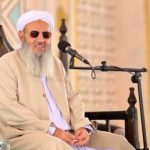

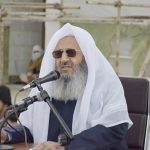
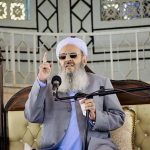
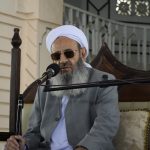

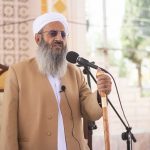
Comments